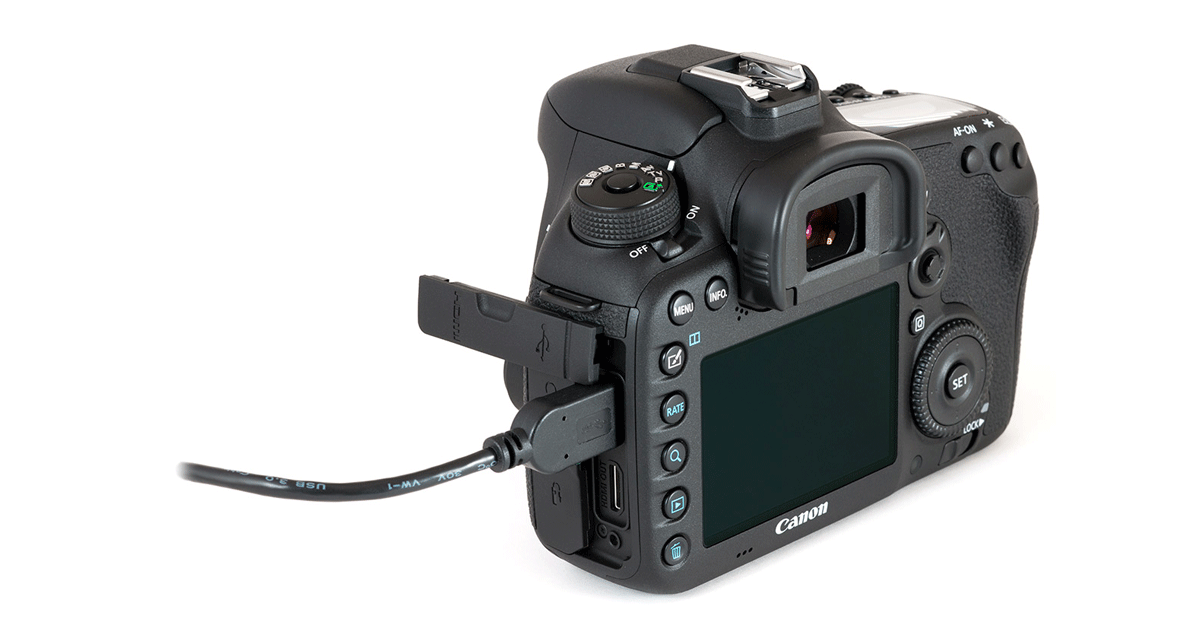Remote Camera Control with Canon’s EOS Digital SDK

Unlock the remote capture capabilities of EOS and PowerShot cameras with Canon’s Software Development Kit for camera control.
Customized Digital Solutions for Controlling Canon Cameras
Canon’s Software Development Kit (SDK) delivers a wide range of remote control features for Canon EOS and PowerShot cameras. Configure camera settings, capture photos & record videos, transfer and delete files from memory cards - all remotely. It’s even possible to operate zoom on compatible PowerShot cameras.
More modest options for camera control include EOS Utility for Mac and Windows, or Camera Connect for wireless smartphone connectivity. However, when working with higher volumes of imagery, or integrating cameras into an automated workflow, we need a more robust solution.
This is when we go to Canon’s SDK. This Software Development Kit provides software developers and computer programmers customizable, digital solutions for Canon camera control. Canon SDK consists primarily of two main parts: EDSDK (EOS Digital SDK) and CCAPI (Camera Control API).
Read on to discover Canon SDK, EDSDK vs CCAPI, and how to use Canon SDK in automated photo studio workflows.
Canon SDK: EOS Digital SDK and Camera Capture Control API
With Canon SDK, there are essentially two main parts, EDSDK & CCAPI, which provide the same core functionalities. These include remote camera capture, auto click focus, fast shot, image transfer, and Live View monitor. The difference is that with EDSDK, a wired connection is required, whereas CCAPI provides wireless camera control.

European Product Marketing Manager at Canon Europe, John Maurice, explains EDSDK and CCAPI. “They’re both ways of interacting with the hardware via the software, and the gateway to controlling a camera remotely.”
John adds, “The reason you come to the EDSDK or the CCAPI is that you have a problem that you need to solve by remote camera control. The ability to do this and integrate it with software has benefits for organizations across industries and across use cases.”
“Across industries and across use cases”
John Maurice provides e-commerce companies as one of his examples of when we need repeatable, reliable processes. In e-commerce, cameras need to perform often and regularly, and we need software to ensure processes are accurate and smooth. Image capture also needs to integrate seamlessly with our editing workflow.
Additionally, John lists photo booths for corporate events as another case for automated photography solutions. "Maybe you want to take pictures of the attendees in order to create souvenirs of the event, or to add their pictures to a database for ID cards. So you might have a software application that is controlling that."

Beyond these examples, imaging solutions can solve a wide range of industrial challenges. Carry out remote inspection processes, or use 3D photogrammetry to document physical objects from multiple angles in 3D models. Canon’s SDK is a solution for all these problems and more. It’s for companies both large and small who need to integrate camera control with software processes.
Get Access to the Canon SDK Download
Canon EDSK enables control over a range of camera functions from within your own software. Access the Canon SDK download by registering interest through the Canon Developer Programme. Approval grants the ability to download the application library files and begin using the software. Receive technical support in the EMEA region, or join a forum for developers to discuss the SDK.
Canon EOS Digital SDK vs CCAPI
Canon launched its EDSDK in September 2006. Based on an older, yet proven protocol, it requires tethering via USB from a camera to a Windows or Mac computer. EDSDK supports a wide range of Canon camera models, from the EOS-1D X Mark III down to the EOS 2000D. It also has support for select PowerShot cameras, as well as EOS DSLR and mirrorless models.
Thanks to this wider range of camera support, PhotoRobot chose the EOS Digital SDK to integrate with our systems. Compared to the CCAPI, which is a new release (2019), EDSDK gives us the widest possible range of camera support for our clients. It also offers higher image transfer speeds, whereas the CCAPI is essentially a mobile version of the SDK.

The CCAPI uses a web-based HTTP protocol to communicate over WiFi, and works on platforms like Android and iOS. Just like the SDK, it gives users control over multiple cameras at the same time, but does so without cabling. This can keep studios less cluttered, although at the cost of limited camera support and WiFI bandwidth constraints.
Deploying Canon SDK in automated PhotoRobot workflows
Canon’s EDSDK integrates seamlessly with PhotoRobot_Controls and all our 3D product photography installations. Remotely control one or more cameras. Program operations for camera capture, image transfer, and Live View monitor.
Simply plug the cameras straight into our software, and take control over photo studio workflows all on one interface. Configure settings to automate photoshoots, and save configurations as “presets” to reuse again and again.
Automate photography processes for everything from packshot photos as well as 360 spins, to multi-row product stills, product videos, and more. The software handles the heavy-lifting, synchronizing cameras and robots to ensure accurate, consistent, and productive photoshoots.
Find more product photography resources
Discover more about PhotoRobot solutions and integrations today. Join us on YouTube and LinkedIn, and sign up for the newsletter below. We share blogs, tutorials, updates, and videos to ensure you get the most of your product photography.




